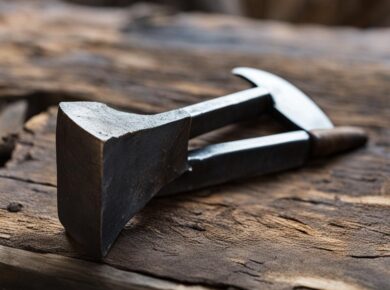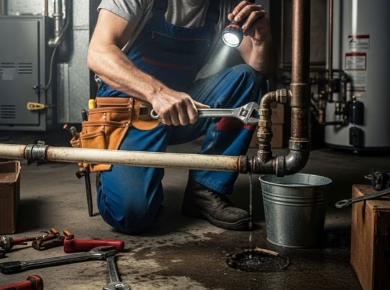If you’re building your dream pool, you’ve probably encountered a maze of decisions and potential pitfalls—like when you realize the contractor you hired doesn’t have the right permits or experience. After helping countless clients navigate the complexities of pool construction, here’s what actually works to ensure your vision becomes a reality without draining your bank account.
Building Your Dream Pool: Your Vision and Budget
One of the first mistakes homeowners make is not having a clear vision of what they want. It’s essential to define your dream pool before diving into the construction process. Are you looking for a serene oasis with a waterfall, a family-friendly swimming area with a shallow end, or a modern infinity pool that overlooks your backyard? Each of these options comes with different costs and design requirements.
Setting a Realistic Budget
When it comes to budgeting, it’s not just about how much you’re willing to spend; it’s about understanding the full scope of costs. A basic in-ground pool can range from $20,000 to $50,000, while more elaborate designs can exceed $100,000. Remember to account for:
- Excavation costs
- Materials (concrete, vinyl, fiberglass)
- Landscaping and hardscaping
- Pool equipment (filters, heaters, lighting)
- Insurance and permits
Here’s exactly how to create a realistic budget: Start by researching local pool installation costs and create a spreadsheet that includes every potential expense. This will give you a comprehensive view of what to expect and help avoid overspending.
Choosing the Right Contractor
Now, here’s where most homeowners go wrong: they hire the first contractor they find based on price alone. While it’s tempting to save money, this can lead to costly mistakes down the line. A good contractor not only brings expertise but also peace of mind.
What to Look for in a Pool Contractor
When selecting a contractor, focus on their experience, credentials, and customer reviews. Ideally, they should have a portfolio of completed projects that align with your vision. Ask questions such as:
- How long have you been in business?
- Can you provide references from past clients?
- Do you have the necessary licenses and insurance?
Never do this: Don’t rely solely on online reviews—check with local regulatory bodies to ensure the contractor has a clean record. We learned this the hard way when a client hired a contractor with numerous complaints, resulting in a drawn-out legal battle.
Permits and Regulations
It’s easy to overlook permits when you’re excited about your new pool, but neglecting this step can lead to headaches later. Building codes vary by location, and failing to obtain the necessary permits can result in fines or even the forced removal of your pool.
Understanding Local Regulations
Check with your local government or homeowners’ association (HOA) to understand the regulations regarding pool construction. These can include:
- Setback requirements (how far the pool must be from property lines)
- Fencing and safety standards
- Water drainage and environmental regulations
Here’s exactly how to navigate this: Contact your local building department to request a checklist of requirements for pool installation. This proactive approach will save you time, money, and stress.
Choosing the Right Materials
Another common pitfall is selecting the wrong materials for your pool. The choice of materials can significantly impact not only the aesthetic appeal but also long-term maintenance and cost. Here’s a quick rundown of the three primary types:
Concrete vs. Vinyl vs. Fiberglass
- Concrete: Highly customizable and durable, but can be the most expensive option. Expect to pay between $50,000 and $100,000. Concrete pools require regular maintenance and resurfacing every 10-15 years.
- Vinyl: A more budget-friendly option, typically ranging from $20,000 to $40,000. Vinyl pools offer a variety of designs but are less durable than concrete, requiring liner replacements every 5-9 years.
- Fiberglass: These pools are pre-molded and can be installed quickly. Costs range from $30,000 to $60,000. While they require less maintenance, design options are limited compared to concrete.
Never do this: Don’t overlook the long-term costs associated with maintenance. A cheaper upfront cost can lead to higher expenses down the line.
Designing for Functionality
While you may have a dream design in mind, it’s crucial to consider functionality. A pool isn’t just a pretty feature; it should enhance your outdoor living experience.
Incorporating Smart Features
Consider adding smart technology to your pool for enhanced functionality. Automated systems can control heating, lighting, and water features, ensuring your pool is always ready for use. Some popular smart options include:
- Automated pool covers for safety and energy efficiency
- Remote-controlled lighting for mood settings
- Smart pool cleaners that optimize cleaning schedules
Here’s exactly how to integrate smart technology: When discussing options with your contractor, inquire about compatibility with existing home automation systems, as this can simplify your setup.
Landscaping and Surrounding Areas
The area around your pool is just as important as the pool itself. Poor landscaping can detract from your pool’s beauty and usability. Think about how you will use the space:
Designing an Outdoor Oasis
Consider adding features like:
- Outdoor furniture for relaxation
- Patios or decks for sunbathing
- Shade structures such as pergolas to protect from the sun
Here’s exactly how to create a cohesive design: Work with a landscape designer who can integrate your pool into the overall aesthetic of your backyard, ensuring that plants complement the pool’s design and function.
Maintenance Considerations
Once your pool is complete, maintenance is key to longevity and enjoyment. Many homeowners underestimate the time and costs associated with pool upkeep.
Creating a Maintenance Schedule
Regular maintenance tasks include:
- Cleaning the pool (skimming debris, brushing walls)
- Testing and balancing water chemistry
- Checking filters and pumps for efficiency
Here’s exactly how to set up a maintenance routine: Invest in a quality pool maintenance guide or hire a service for the first few months to establish a good routine. This ensures you’re not overwhelmed and can enjoy your new pool from day one.
Final Thoughts
A dream pool is a significant investment that can enhance your lifestyle and increase your home’s value. By avoiding these costly mistakes—such as skimping on the contractor, neglecting permits, and overlooking maintenance—you can build a pool that not only meets your visions but also serves your family for years to come. Remember, it’s all about careful planning, smart choices, and knowing the right questions to ask along the way.




